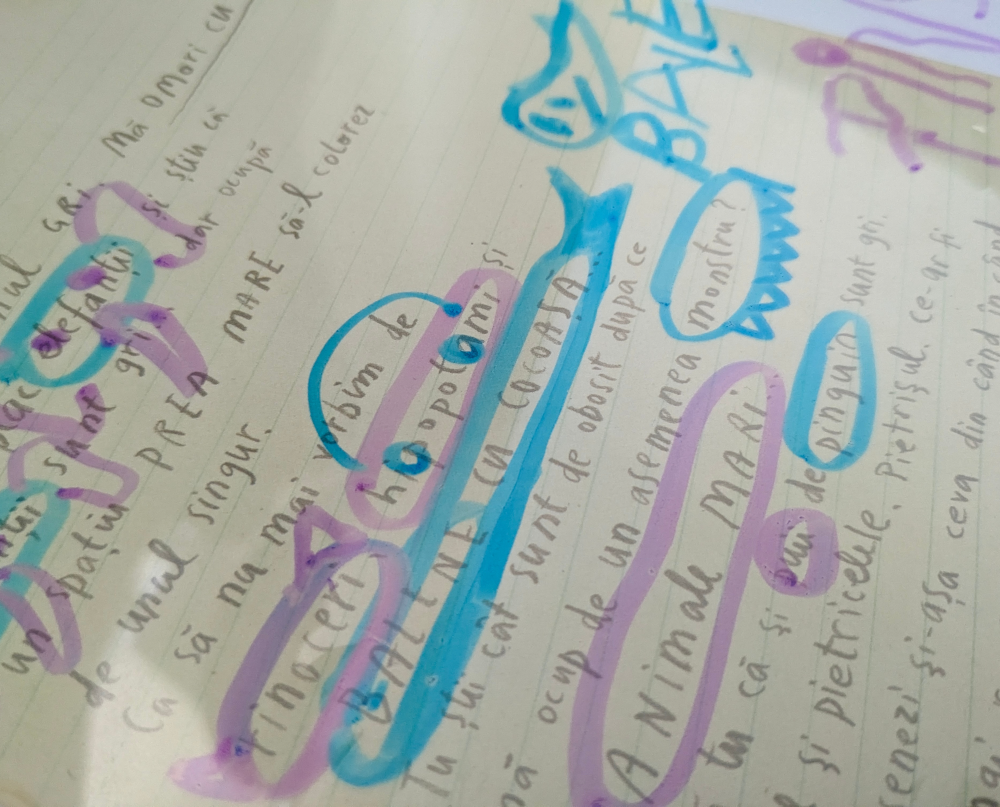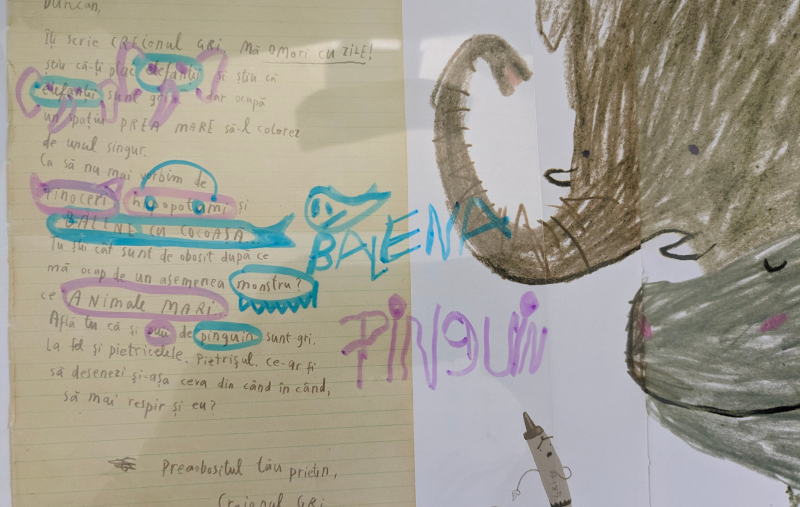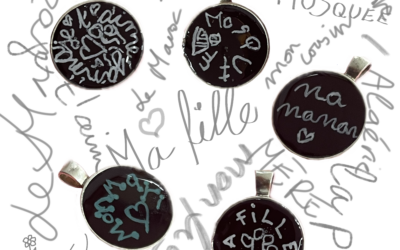Word Search with Transparent Sheet
Word Search with Transparent Sheet
Participants practice reading comprehension, vocabulary development, spelling, and sentence construction. They also improve visual recognition of words, grammatical awareness, and oral expression. The activity fosters creativity, attention to detail, and enjoyment in language learning through a multisensory approach.
Time
1 hour
Adults and children aged 6 and up
Up to 20 Participants
Language skills
Vocabulary Expansion, Reading Comprehension, Word Recognition, Sentence Formation, Spelling Practice
Other skills
Focus & Attention – Searching for words requires concentration, Cognitive Skills critical thinking, Fine Motor Skills, Problem-Solving
Levels
From A1 to A2
None, optionally drawing paper, pens and pencils

Languages Available
1. Choose a Passage from a Story
– Select a short, age-appropriate excerpt from a book or story.
– Prepare a sheet of paper or a transparent sheet and colored markers, based on the child’s preferences.
Print or clearly write out the text passage on a sheet of paper if you’re not working directly in the book.
2. Read the Story Aloud
– Read the entire story to the participants twice.
– Discuss the main ideas and make sure they understand the passage.
3. Prepare the Activity
– Place the transparent sheet over the page with the selected text.
– Choose a few key words from the passage (preferably words that can form a sentence).
4. Find and Highlight the Words
– Ask the child to look for the selected words in the passage.
– The child will search for and circle the words on the transparent sheet using a colored marker.
5. Rewrite the Words on the Transparent Sheet
– The child rewrites the identified words among the dots and colorful circles on the transparent sheet in a creative way.
6. Form Sentences Based on Skill Level
– Beginner Level: The child forms a simple oral sentence using the words found and by connecting the dots with lines.
– Advanced Level: Associate each color with a grammatical category (e.g., red for nouns, green for verbs, blue for adjectives) and rewrite the sentences on the transparent sheet in a creative way.
This game enhances reading comprehension, vocabulary, spelling, and sentence formation while offering an engaging and interactive learning experience!

For Educators, Teachers and Parents
In the following section you’ll find additional information to help you adapt this activity for different audiences, language abilities and group sizes. This information should help educators and teachers to adapt the activity to meet the specific needs of different learners and to ensure accessibility, engagement and effectiveness in different learning environments. Optionally, we also give advices to parents how to condct the activity at home.
Recommendations for teachers
- Choose Age-Appropriate
– Texts Select engaging stories that match the students’ reading level.
– Use familiar themes to spark interest and support understanding. - Adapt the Activity to Different Skill Levels
– For Beginners: Choose short excerpts with simple words and encourage oral sentence formation.
– For Advanced Students: Select longer excerpts with more complex vocabulary, assign colors to grammatical categories, and ask for writtensentences. - Make the Activity Interactive
– Let the child choose the colors and explain their choices.
– Encourage students to read the excerpt aloud before starting the activity.
– Promote pair or small group work, with each child using their own transparent sheet and markers. - Include a Discussion Moment
– After circling the words, discuss their meanings or use them in other contexts.
– Encourage questions to ensure the text was understood. - Use a Variety of Texts
– Alternate between fiction, non-fiction, poetry, and informational texts.
– This helps students develop a range of reading skills and broaden their vocabulary. - Boost Engagement with Small Challenges
– Set a time limit for finding the words to make the activity more exciting.
– Award bonus points for creative or grammatically complex sentences, as well as for originality in the artistic design. - Encourage Creativity
– Allow children to create patterns or drawings on the transparent sheet using the selected words.
– Offer suggestions or extra ideas to spark creativity.
– Provide Feedback and Support - Praise effort and accuracy
– The final artwork will be signed and displayed.
– Correct mistakes constructively, focusing on the learning process rather than just right or wrong answers. - Integrate the Activity with Other Language Exercises – Follow up with a writing task where students use the decorated transparent sheet to create a short story.
– Use the game as an introduction to spelling or grammar lessons. - Make the Activity Fun!
– Let students choose their own colored pencils or markers for circling and highlighting.
– Turn the activity into a classroom game by offering small rewards for participation, effort, and artistic creativity. - Boost Engagement with Small Challenges
– Set a time limit for finding the words to make the activity more exciting.
– Award bonus points for creative or grammatically complex sentences, as well as for originality in the artistic design. - Encourage Creativity
– Allow children to create patterns or drawings on the transparent sheet using the selected words.
– Offer suggestions or extra ideas to spark creativity.
– Provide Feedback and Support - Praise effort and accuracy.
– The final artwork will be signed and displayed.
– Correct mistakes constructively, focusing on the learning process rather than just right or wrong answers. - Integrate the Activity with Other Language Exercises
– Follow up with a writing task where students use the decorated transparent sheet to create a short story.
– Use the game as an introduction to spelling or grammar lessons. - Make the Activity Fun!
– Let students choose their own colored pencils or markers for circling and highlighting.
– Turn the activity into a classroom game by offering small rewards for participation, effort, and artistic creativity.
Recommendations parents
- Game variation: Make the activity more fun by turning it into a game where you take turns to find words. Whoever finds a word first gets apoint or a small reward.
- Creative sentence challenge: Encourage your child to use the words they find to create a funny or imaginary story, thus stimulating theircreativity and enjoyment of language.
- Instead of writing them, connect the circles with coloured lines to form sentences.
Adaptation/Application of the method
1. A Group with Varied Language Proficiency
- Pair or Group Work – Group learners based on their skill level or in mixed-ability groups for peer support. More advanced learners can help identify word categories and choose colors for circling or highlighting.
- Different Difficulty Levels – Provide word lists tailored to each level: beginners get simple words (e.g., objects, animals), while advanced learners focus
on grammatical categories (nouns, verbs, adjectives) and use multiple colors for each category. - Use of Visual Aids – Add images next to keywords for beginner learners.
- Sentence Challenge – Advanced learners can create longer or more complex sentences using the circled words or try to find as many words as possible
from a specific category. - Additional Support – Learners who need more help can use dictionaries.
2. For Learning Other Languages
- Translated Texts – The transparent sheet can be placed over texts in different languages so learners can compare the circled words in each language.
- Focus on Language-Specific Words – Choose words that are challenging in pronunciation, grammar, or spelling in that language, and highlight them in
distinct colors. - Phonetic Variations – Highlight differences in pronunciation or alphabet (e.g., Latin vs. Cyrillic).
- Cognates and False Friends – Help learners identify look-alike or misleading words across languages.
3. For Bilingual/Multilingual Options
- Word Search in Two Languages – Learners circle words in the target language and translate them on the transparent sheet, using a different color for
each language. - Sentence Formation in Two Languages – Learners create sentences in both languages and write them on the transparent sheet in a format of their
choice. - Code-Switching Challenge – Encourage learners to mix words from different languages into creative sentences, using different colors for each
language. - Compare Sentence Structure – Learners analyze how grammar and sentence structure differ between languages.
4. Cultural Contexts
- Use Culturally Reflective Stories and Words – Choose stories and vocabulary that reflect the learners’ backgrounds and experiences.
- Local vs. Global Variations – Compare how the same words or concepts appear in different cultures and mark them with distinct colors.
- Adapting Word Selection – Replace unfamiliar words with culturally relevant equivalents.
- Storytelling Adaptations – Encourage learners to write sentences related to their own culture.
- Visual Elements – Encourage learners to use the transparent sheet to identify cultural elements in the book and incorporate them into theirdrawings.
5. For Other Age Groups
Young Learners (Ages 5–7)
– Use short, simple sentences accompanied by images.
– Focus on letter recognition and basic word associations.
– Allow oral responses and have learners connect colored circles with lines to form sentences instead of writing them.
Teenagers (15+ years)
– Use more complex texts, idiomatic expressions, or abstract concepts.
– Introduce synonyms and antonyms to deepen vocabulary.
– Turn the activity into a discussion or debate challenge.
Adults and Language Learners
– Use real-life texts (news articles, recipes, instructions).
– Focus on professional or academic vocabulary.
– Encourage writing contextually meaningful sentences and illustrating them on the transparent sheet.
6.Distant and online learning:
- Distribute beforehand a Text and Transparent Sheet – Share a text or story along with a transparent sheet so learners can work individuallyat home.
- Interactive Online Boards (Jamboard, Miro, Padlet) – Learners can collaboratively write words and sentences.
- Virtual Reading and Discussion – Live reading of the story (via Zoom, Teams, Google Meet); read the passage aloud and discuss the key words.
- Use of Pre-recorded Videos – Send learners a video recording of the text being read aloud so they can listen at their own pace.
- Audio Versions – Provide an audio file of the text fragment for listening and pronunciation practice.
- Typing in Chat or Comments – Learners can type selected words into the chat window or comment section.
- Digital Recording of the Transparent Sheet – Learners can photograph their transparent sheet with the circled words and send the image tothe instructor or peers for feedback.
- Voice Recordings and Oral Responses – Use tools like WhatsApp, Flipgrid, or Loom for learners to record spoken sentences.
- Virtual Breakout Rooms – Assign learners to breakout rooms to discuss and create sentences together, which they can then recordindividually on their transparent sheet.
- Leaderboards and Rewards – Track learner participation using points, badges, or certificates.
- Discussion Forums (Moodle, Edmodo, Google Classroom) – Encourage learners to post their sentences and give peer feedback.
- Create a Visual Gallery (PollUnit) – Learners can upload their final results and vote on each other’s creative work.
Challenges
1. Engagement and motivation
– Keeping children engaged during reading and word search activities can be difficult, particularly for younger or less motivated learners.
– Risk: Children may lose interest if the activity becomes repetitive or too simple for more advanced learners.
– Solution: Alternate this activity with drawing tasks based on the pictures in the book, set time limits for word searches or incorporate fun elements (e.g. use colours or themes that interest the children).
2. Varied language proficiency levels
– Challenge: In a group with mixed language proficiency levels, some students may struggle to understand the passage or process the language used.
– Risk: This can lead to frustration, confusion, and a lack of participation from those who lack confidence in their language skills.
– Solution: Adjust the difficulty of the activity, such as the complexity of the passage or vocabulary, according to each student’s level. Grouping students by level or pairing advanced and beginner students can create a more encouraging learning environment.
3. Time constraints
– Challenge: The activity may take longer than estimated, especially in large groups or when students need extra support to understand the text.
– Risk: If not managed well, the activity may take too long, reducing the time available for other tasks or leaving it unfinished.
– Solution: Set clear time limits for each stage of the activity (e.g. reading the story, searching for words and forming sentences) and ensure that the activity is kept short and focused. If necessary, divide the activity into smaller sections.
References and Resources
References and external resources for the Romanian language: https://learning-corner.learning.europa.eu/index_ro
Similar Activities
Travel Game
The workshop provides a personal experience and links the practise of writing skills to aesthetical pleasure. It is recommanded for children or adults with low literacy competences to build a positive relationship to writing.
Ma première histoire
This fun activity for all ages uses storytelling and a simple card game to help children develop language skills, creativity, and self-confidence by reading, identifying story elements, and creating their own stories


